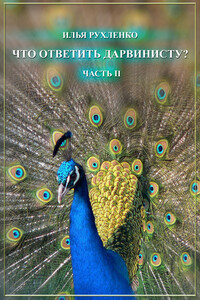Smith H.R., Lautenschlager R.A. Predators of the Gypsy Moth / Gypsy moth handbook. Combined Forest Pest Research and Development Program. Agriculture Handbook № 534. U.S.D.A. 1978. 72 p.
Smith P.D. Darwinism in a flutter: did a moth show evolution in action? The Guardian, May 11, 2002.
Sourakov A. Two heads are better than one: false head allows Calycopis cecrops (Lycaenidae) to escape predation by a Jumping Spider, Phidippus pulcherrimus (Salticidae) // Journal of Natural History. 2013. V. 47. № 15–16. P. 1047–1054.
Stenico M., Lloyd A.T., Sharp P.M. Codon usage in Caenorhabditis elegans: delineation of translational selection and mutational biases // Nucleic Acids Res. 1994. V. 22. P. 2437–2446.
Stevens M., Graham J., Winney I.S., Cantor A. (c) Testing Thayer’s hypothesis: can camouflage work by distraction? // Biol Lett. 2008. V. 4. P. 648–650.
Stevens M., Hardman C.J., Stubbins C.L. (а) Conspicuousness, not eye mimicry, makes «eyespots» effective antipredator signals // Behav Ecol. 2008. V. 19. P. 525–531.
Stevens M., Marshall K.L.A., Troscianko J., Finlay S., Burnand D., Chadwick S.L. Revealed by conspicuousness: distractive markings reduce camouflage // Behavioral Ecology. 2013. V. 24. P. 213–222.
Stevens M., Merilaita S. Animal camouflage: current issues and new perspectives // Philos Trans R Soc B Biol Sci. 2009. V. 364. P. 423–427.
Stevens M., Stubbins C., Hardman C.J. (b) The anti-predator function of «eyespots» on camouflaged and conspicuous prey // Behav Ecol Sociobiol. 2008. V. 62. P. 1787–1793.
Steward R.C. Industrial and non-industrial melanism in the peppered moth Biston betularia (L.) // Ecol. Entomol. 1977. V. 2. P. 231–243.
Stobbe N., Schaefer H.M. Enhancement of chromatic contrast increases predation risk for striped butterflies // Proc. R. Soc. B. 2008. V. 275. P. 1535–1541.
Suga H., Tschopp P., Graziussi D.F., Stierwald M., Schmid V., Gehring W. Flexibly deployed Pax genes in eye development at the early evolution of animals demonstrated by studies on a hydrozoan jellyfish // PNAS. 2010. V. 107. P. 14263-14268.
Syriatowicz A., Brooks R. Sexual responsiveness is condition-depended in female guppies, but preference functions are not // BMC Ecology. 2004. V. 4. P. 5.
Takahashi M., Arita H., Hiraiwa-Hasegawa M., Hasegawa T. Peahens do not prefer peacocks with more elaborate trains // Animal Behaviour. 2008. V. 75. P. 1209–1219.
Turner А.Н., Pol D., Clarke J.A., Erickson G.M., Norell M.A. Basal dromaeosaurid and size evolution preceding avian flight // Science. 2007. V. 317. P. 1378–1381.
Vallin A., Dimitrova M., Kodandaramaiah U., Merilaita S. Deflective effect and the effect of prey detectability on anti-predator function of eyespots // Behavioral Ecology and Sociobiology. 2011. V. 65. P. 1629–1636.
Vallin A., Jakobsson S., Lind J., Wiklund C. Prey survival by predator intimidation: an experimental study of peacock butterfly defence against blue tits // Proc R Soc Lond B Biol Sci. 2005. V. 272. P. 1203–1207.
Vallin A., Jakobsson S., Lind J., Wiklund C. Crypsis versus intimidation – anti-predation defence in three closely related butterflies // Behavioral Ecology and Sociobiology. 2006. V. 59. № 3. P. 455–459.
Vallin A., Jakobsson S., Wiklund C. «An eye for an eye» – on the generality of the intimidating quality of eyespots in a butterfly and hawkmoth // Behav Ecol Sociobiol. 2007. V. 61. P. 1419–1424.
Vallin A., Jakobsson S., Wiklund C. Constant eyespot display as a primary defence – survival of male and female emperor moths attacked by blue tits // J Res Lepidoptera. 2010. V. 43. P. 9–17.
van't Hof A.E., Edmonds N., Dalikova M., Marec F., Saccheri I.J. Industrial melanism in British peppered moths has a singular and recent mutational origin // Science. 2011. V. 332. № 6032. P. 958–960.
Verheyen E., Salzburger W., Snoeks J., Meyer A. Origin of the superflock of cichlid fishes from lake Victoria, East Africa // Science. 2003. V. 300. № 5617. P. 325–329.
Vlieger L., Brakefield P.M. The deflection hypothesis: eyespots on the margins of butterfly wings do not influence predation by lizards // Biol J Linn Soc. 2007. V. 92. P. 661–667.




